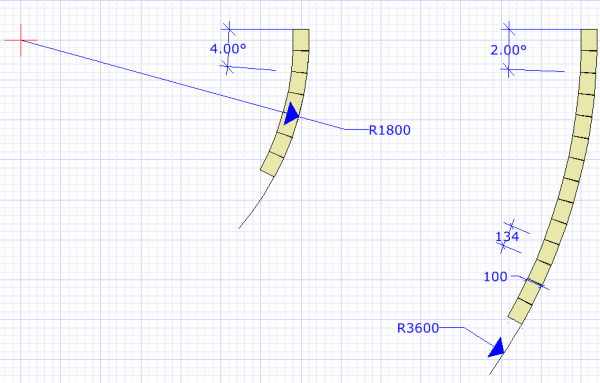Posted: Wed Aug 29, 2007 9:15 pm
We wish to use Bradstone Woburn Rumbled (100mm x 134mm) blocks to form a quadrant of a circle. The qudarnt has a maximum radius of 3.6m. We intend to use this as a ramp to the front door. The ramp is 1:12.
We would like the blocks to be laid in a running bond from the outer radius and the continue with a running bond on each course until there is no radius.
We started to lay a couple of courses but found that the 2nd and 3rd courses that the joints were in some instances lining up with each other. This looked incorrect.
We have completed all other areas of paving with some great tips and help from this site. We have trawled the site for tips on this subject but could not find any.
We would apprecite it if anyone has experience in this type of setting out and can advsie of any usefull hints / tips which could assist.
Many Thanks
Chappers
We would like the blocks to be laid in a running bond from the outer radius and the continue with a running bond on each course until there is no radius.
We started to lay a couple of courses but found that the 2nd and 3rd courses that the joints were in some instances lining up with each other. This looked incorrect.
We have completed all other areas of paving with some great tips and help from this site. We have trawled the site for tips on this subject but could not find any.
We would apprecite it if anyone has experience in this type of setting out and can advsie of any usefull hints / tips which could assist.
Many Thanks
Chappers
